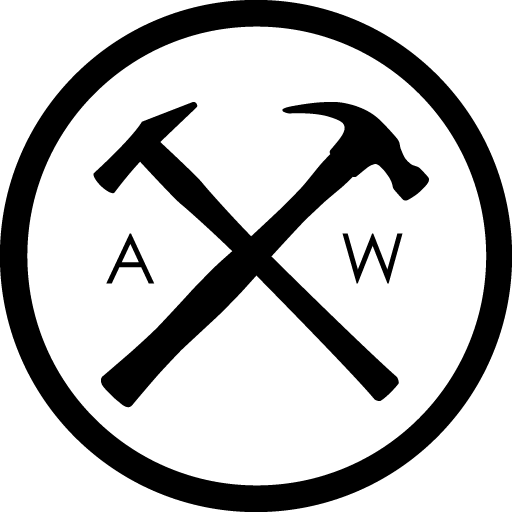Forge Build Part I: Building the Burners
Share

Part I: Building the Forge Burners
A forge is just an insulated shell without a burner (or multiple forge burners in my case). So the first thing I did was set out on building the forge burners. I built them with parts from the plumbing aisle of my local big box hardware store.
A rule of thumb when building a forge is to have one of these 3/4″ propane burners for every 350 cubic inches of forge volume. The shell I am using (an old compressed air tank I got on Craigslist for $20) will allow me to have about 650 cubic inches of volume when I consider the 2″ of insulation around the inside.



Burner Tube Preparation
To begin, I took my section of 12″ long 3/4″ pipe and drilled holes every 90º around the tube that was about 3″ long. First with a small drill bit for pilot holes, and then followed by a larger bit. I then finished up with a file to turn the many holes into long slots.


Gas Accelerator Assembly
With the main body slotted, I moved to the ‘gas accelerator assembly’. This is just a 1/8″ NPT brass nipple with a MIG welder tip. To get the brass tube through the black iron 3/4″ end cap, I put it in my lathe and used that to drill a hole in the center of the cap that is barely big enough for the brass nipple to slide through. I then drilled and tapped a hole on the side of the cap for a set screw to ensure it stays put. I put a 1/8″ brass end cap on the lathe and drilled out the center and tapped it to accept the MIG tip.

Burner Choke Sleeves
Now for the choke sleeves. These control the air flow by adjusting the air-fuel mixture. I used 1″ iron pipe which nicely telescopes with the 3/4″ pipe. I cut a section about a half inch longer than the slots and cleaned it up. I chucked it on my lathe to sand a smooth slope towards the inside on one end which helps with air flow. Then I added a set screw and moved on to the nozzles.


Burner Nozzles
We have an example of when I was too excited and forgot to take good pictures. The nozzles are made of 1.5″ pipe about 2.5″ long with a 3/4″ long 1″ pipe that acts as a collar to close the gap between the 3/4″ pipe and the 1.5″ pipe. It was a snug fit that I welded together, which you can see in the second image. I, of course, had to test them out before moving on to building the main body.

Tools & Materials Used
- 1/4″ Brass Rod (for Gas Accelerator Assembly) This is solid if you have a lathe and want to drill and tap your own injector tube which is what I did later.
- Threaded brass pipe for Gas Accelerator – This is an alternative to the brass rod if you don’t have a lathe available or just want an easier option.
- Mig Tips for Gas Accelerator – The business end that injects the gas into the burner tube.
- Bernzomatic TS8000 Mapp Gas Torch – I use this to ignite the burners as well as many other handy uses throughout the shop.
- Flux Core Welder – Flux core welders are one of the cheapest ways to get into welding. Note, this is not the one I have but this should do the trick for this job.
- JET Lathe – This is a newer version of my lathe that I typically use for woodworking but this also helped out with this project in drilling perfectly centered holes in round stock.
- Nova G3 4 Jaw Lathe Chuck – This is the chuck I used on my lathe. Make sure to get the properly sized thread adapter (sold separately) for it to fit your lathe.
- Benchtop Vise – This is slightly different than mine but you can’t really beat it for the price and surely comes in handy.
- Tap and Die Set – Different than what I have but should be plenty for this project. Its a trusted brand and the price is right.
- (Book) Gas Burners for Forges, Furnaces, and Kilns – This book was invaluable to me through this process.


